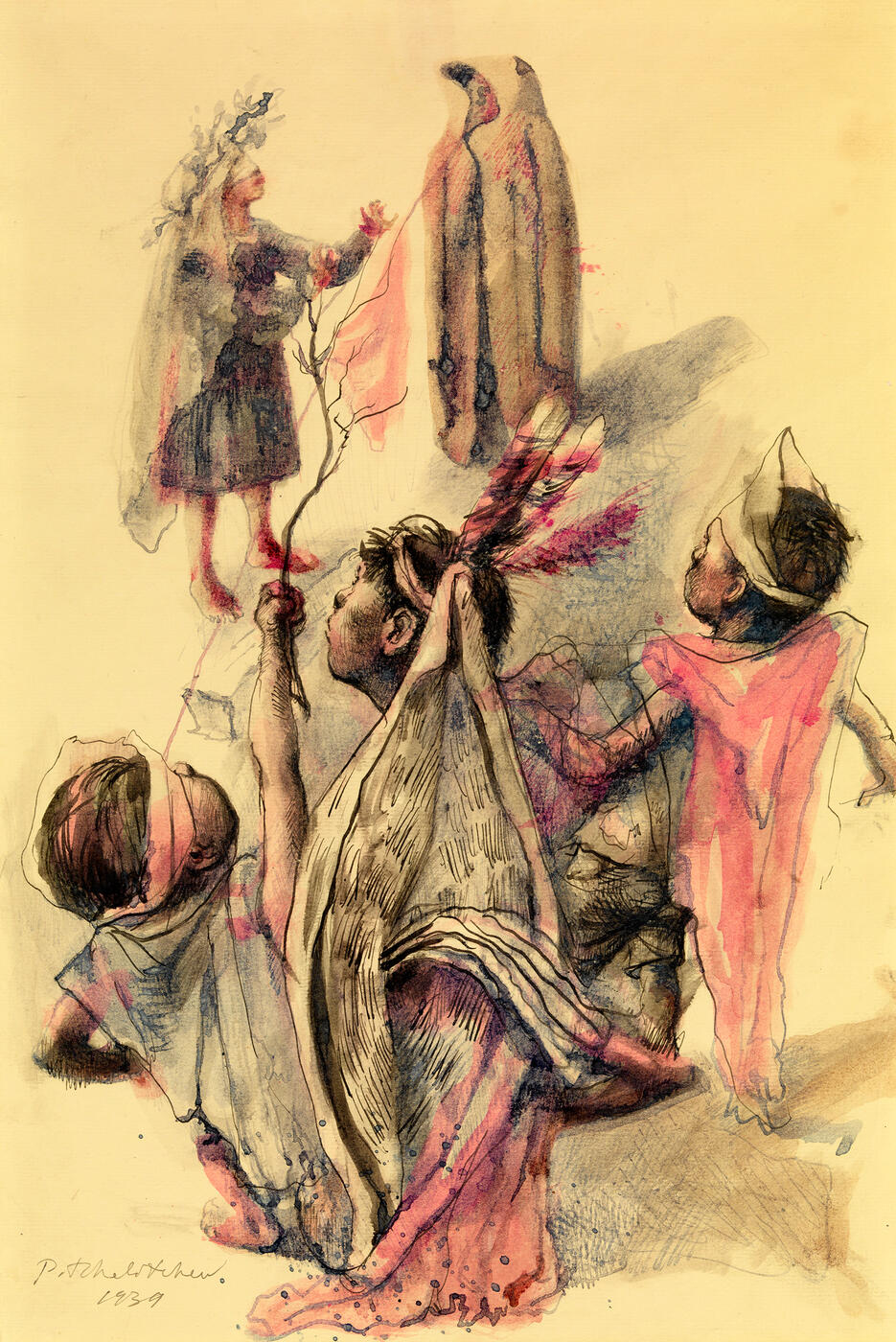3 June 2015 Russian Art Auctions
3 June 2015

* 140. TCHELITCHEW, PAVEL (1898-1957)
Blindfolded Girl, signed and dated 1939.
Ink and watercolour on paper, 47.5 by 32.5 cm.
25,000-30,000 GBP
Provenance: With Zeitlen & ver Brugge Booksellers, Los Angeles (label on the backing board).
With Neuberger Museum of Art, Purchase, USA (label on the backing board).
With Richard Feigen Gallery, New York, 1974 (label on the backing board).
Acquired from the above by a previous owner.
Collection of Julien and Jean Levy.
Hommage à Julien Levy, Tajan, Paris, 5 October 2004, lot 43.
Private collection, Europe.
Acquired from the above by the present owner.
Private collection, USA.
Related literature: For similar works, see A. Kuznetsov, Pavel Tchelitchew. Metamorphoses, Stuttgart, Arnoldsche, 2012, pp. 220–235, Nos. 193–204.
The present lot is a study for one of Tchelitchew’s best-known paintings, Hide and Seek (Cache-Cache), 1940–1942, currently in the collection of the Museum of Modern Art, New York.
This magnificent work by Pavel Tchelitchew, one of the most interesting artists of the 20th century, dates from the period when he created his famous canvas Hide and Seek (1939–1942, MoMA, New York). The main subject of that large work is children hiding.
Undoubtedly, Tchelitchew conceived his astonishing Hide and Seek primarily by reliving impressions of his happy childhood spent at his father’s estate amidst the landscapes of his native Dubrovka, surrounded by vast fields, woodland thickets, lakes and the beautiful river Zhizdra. The children of peasants and landowners would often play games together, outdoors in the fresh air: blind man’s buff, tag (catch me if you can), gorodki, lapta and particularly, hide-and-seek. For the young Tchelitchew, this unpretentious children’s game had a special meaning. The artist had been blessed with a fantastic imagination and he translated the simple mechanics of hide-and-seek into associative images that grew in his consciousness. He saw the “hidden” in the folds of twilit landscapes, in the magic of mists and mirages and in the fairytale tracery on frosted windows, not made by human hands.
In 1938, as an émigré in far-off America he was offered the use of a studio-workshop by his good friend Alice de Lamar at her house in Weston (Connecticut). Here Tchelitchew produced dozens of drawings and watercolours of the hilly pastures and woods and was charmed by the diversity of shapes in the leaves of the beeches, maples, American black birches and wild flowers. In them he saw the caps, capes and shirts of leaf-children, armed with long spears of grass with which they fought, hid or chased each other in the wind-blown meadows.
The watercolour offered here is a preparatory sketch for the famous gouache Blindfolded Girl, 1939, which was once in the collection of the artist’s friend and well-known American actress Ruth Ford.
Notes on symbols:
* Indicates 5% Import Duty Charge applies.
Ω Indicates 20% Import Duty Charge applies.
§ Indicates Artist's Resale Right applies.
† Indicates Standard VAT scheme applies, and the rate of 20% VAT will be charged on both hammer price and premium.